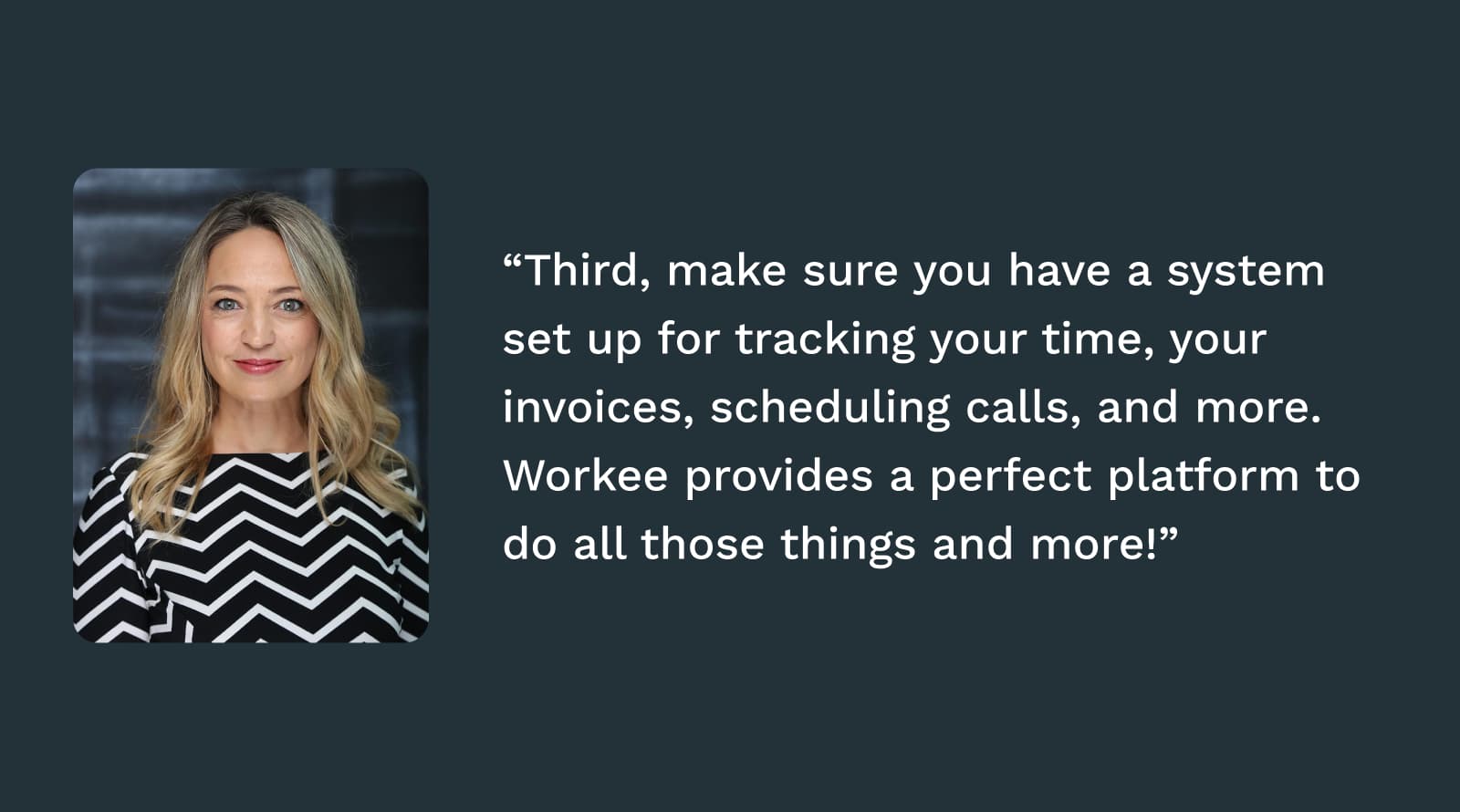How to make grant writing less painful 10 tips with Holly Rustick

You've poured countless hours into crafting the perfect grant proposal, down to the fine details. Despite your hard work, you can't stop yourself from scrutinizing every single word of your proposal in your head. Let's face it, grant writing can be nerve-wracking, but it is doable if you know the basics!
Statistics show that over $500 billion in grants are awarded in the U.S. each year, so it's worth learning how to make the process easier.
Holly Rustick, a best-selling author and host of the Grant Writing & Funding podcast, shares her top 10 tips for making the grant writing process less painful.
Holly is leveraging her extensive grant writing background, having secured millions for nonprofits, to mentor freelance grant writers in business design and expertise, helping them maximize results from the convenience of their homes.
Let's get started!
1. Start with the basics – understand the FOA/RFP Guidelines

To make grant writing easy, start by taking the time to read through the Funding Opportunity Announcement (FOA) or Request for Proposal (RFP) thoroughly. This will save you a lot of time and frustration later on. Doing so provides you with the necessary information on the guidelines and eligibility requirements for a successful application. This document also outlines the evaluation criteria, budget restrictions, and other relevant details that will help to ensure the greatest chance of securing the funds. Taking the time to read and understand the FOA or RFP is essential and will make writing a grant much easier. If you have any questions, don't hesitate to contact the funding organization for clarification.
2. Do your research and create a straightforward problem statement
The problem statement is arguably the most important part of a grant proposal. It's essential that you do your research and create a compelling problem statement. Grant applications often require a detailed description of why the grant is needed and the desired outcomes – without this, your application may be passed over.
Do your research and create a clear, persuasive statement regarding the problem's urgency and how the grant money will be used to address the issue.
Make sure to provide evidence of the need, such as statistics, recent research, trends, or testimonials that illustrate the severity of the issue.
Use strong visuals. A picture is worth a thousand words, so make sure your visuals are strong and impactful. Use charts, graphs, and infographics to make your points.
Be realistic, and don't overpromise what your project will achieve. Stick to achievable goals you can realistically accomplish with the funding you request.
Show why you are a good fit by highlighting your experience, qualifications, and project's unique aspects that make you the best candidate for funding.
Provide as much detail as possible. This will put you in the best position to secure the funding you need for your project!
3. Write SMART goals and objectives for your project

Keep the following in mind when writing goals and objectives: They need to be SMART:
- They should be smart and precise.
- They should be measurable so you can gauge your progress.
- They should be achievable and doable.
- They should be relevant and address the needs of your demographic.
- They should be time-bound, so you can set a timeline for achieving them.
4. Keep it short and sweet
Take it from me: Keeping things simple is usually best. Focus on providing useful information in your proposal. Stick to the essentials and ensure that your argument makes sense. Steer clear of technical jargon that might confuse your audience. Remember that the goal is to get your point across, so speak in terms people can comprehend.
5. Stay organized by setting a timeline for your activities
Grant writing is serious business, so staying on top of things from start to finish is important. Create a timeline or use a project management tool to keep track of deadlines, deliverables, and other vital details.
This will help you stay organized and on track while writing your proposal. It is also helpful to include a timeline in your proposal so that the funding agency can see what you have planned and how you intend to use the funds.
6. Budget accordingly
Remember, you're asking for money. Therefore, it is important to be conscious of your budget and to allot your funds accordingly. When creating your budget, be sure to include all necessary costs associated with your project. This includes materials, labor, overhead, and any other miscellaneous costs that may arise. Additionally, be sure to include a buffer for unexpected costs. Once you have created your budget, be sure to stick to it. This will show the funding agency that you are accountable for their money and have a precise plan for how you will use it. Also, ensure you're not just throwing unrealistic figures in the air. Your budget should be realistic.
7. Tick all the boxes before submitting your proposal
When submitting your grant proposal, be sure to follow all instructions provided by the funding agency. This includes providing all required documentation, such as a budget and timeline for your project. Please do so to avoid your proposal being rejected outright. If you have questions about the submission process, contact the funding agency directly for clarification.
8. Be prepared to answer any questions the funding agency may have about your proposal

Be prepared to answer any questions the funding agency may have about your proposal. You should be able to clarify your funding request, how the money will be used, and how you plan to pursue the project. Be sure to have this information readily available when you submit your proposal.
9. Allow enough time for the grant writing process
Starting your grant early is one of the best things you can do to increase your chances of success. The earlier you start, the more time you will have to research potential funding sources, develop your proposal, and gather all necessary supporting materials. It is also important to give yourself enough time to revise and edit your proposal before submitting it. A well-written and well-organized proposal that is submitted on time is much more likely to be successful than a rushed and sloppy one.
10. Submit on time
Submitting your grant proposal a few days before the deadline gives you an edge. You'll be able to take the time to review and refine your proposal and be ready for any unexpected curveballs. You'll have time to troubleshoot and address any issues that arise before the deadline. Plus, this will also ensure that your proposal is given adequate consideration, as it won't be competing with a last-minute rush of other applications.
What advice do you have for freelance grant writers who are starting?
It's important for freelance grant writers just starting out to get a business model in place for their business.
Oftentimes, grant writers organically start freelancing because of the high demand of nonprofit organizations needing a grant writer. There are more than 1.6 million registered nonprofit organizations in the U.S. alone, and the nonprofit sector contributes more than 5% to the U.S. GDP!
Many freelance grant writers I know started freelancing as a side hustle because anytime they are out at a networking event (or just shopping) and tell others what they do, they get prospective clients!
Nearly everyone knows a nonprofit that can use your grant writing services!
It's great that these freelance grant writers have potential (or real!) clients when they first start out, but then they realize they aren't sure:
What to charge,
What their pricing model should be (i.e., hourly, packages, retainers), or
How to set up systems for invoicing, tracking time, and more.
These systems are important to have set up so you can run an efficient, profitable, and stress-free business.
Otherwise, you may not be charging enough, miss out on long-term clients, or be chasing invoices.
At the very least, make sure to get your business ducks in a row, so you have the opportunity to make a lucrative career out of freelance grant writing.
First, figure out what the value is of your services. Grants can bring in millions of dollars for businesses and nonprofit organizations. If you are only charging nominal fees, that brings the entire professionalism of the sector down.
Second, organize your services so that you know how to sell them. Do you charge hourly, by the package, or on retainer? Maybe you have a combination of some of these different ways. Once you set up your services, it is easier to communicate them to clients and market your grant writing services.
Third, make sure you have a system set up for tracking your time, your invoices, scheduling calls, and more. Workee provides a perfect platform to do all those things and more!

If you are looking to learn how to write winning grants or set up a freelance grant writing business, then be sure to check out our resources at Grant Writing & Funding.
Additionally, inside the On-Demand Freelance Grant Writer Master Course, we give you a roadmap for these business systems that are relevant to working with nonprofit clients.
Thank you, Holly, for sharing your insights with us and supporting Workee!
Find more interesting tips on Holly's Youtube.
Connect and learn more about Holly on her website.


